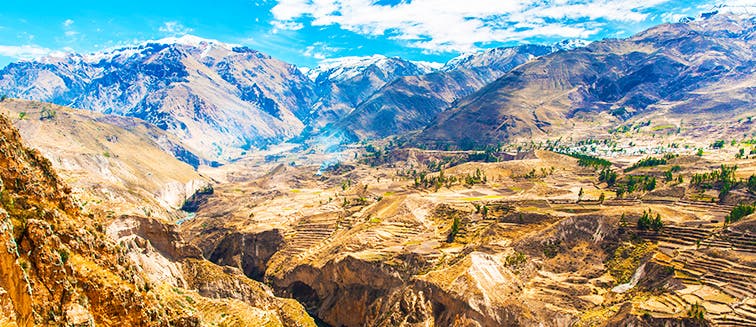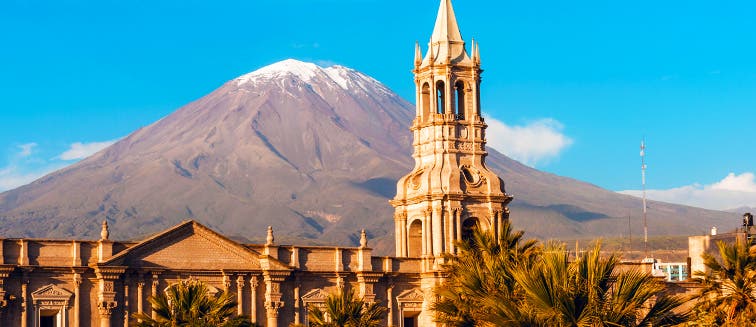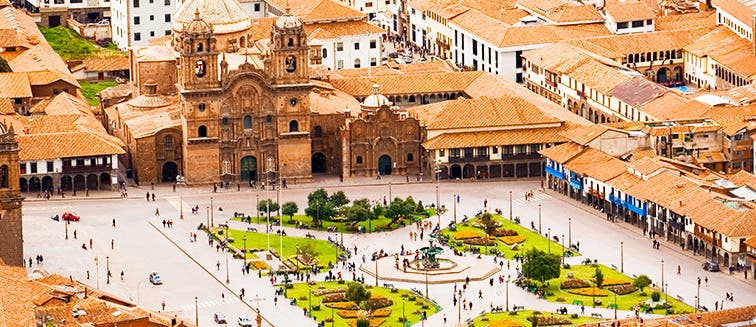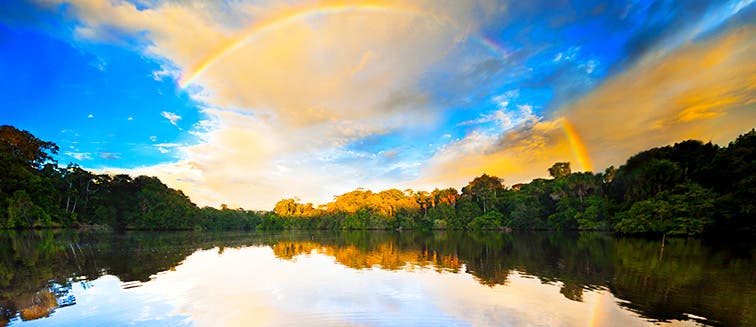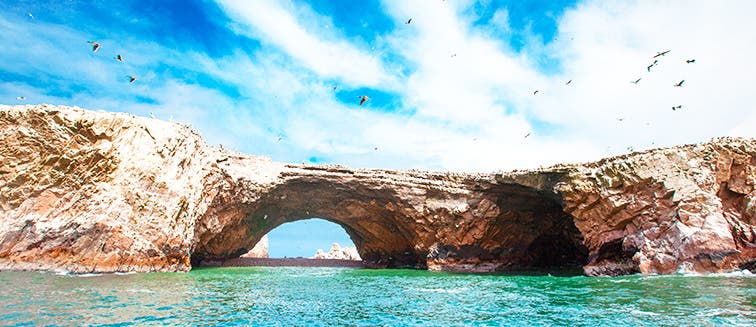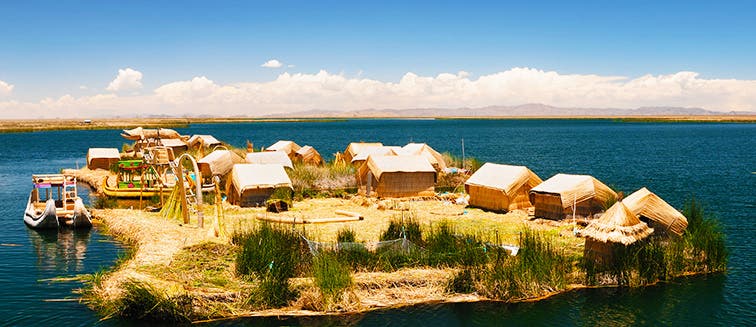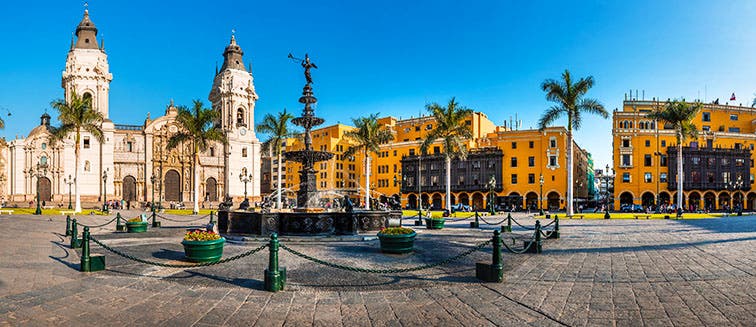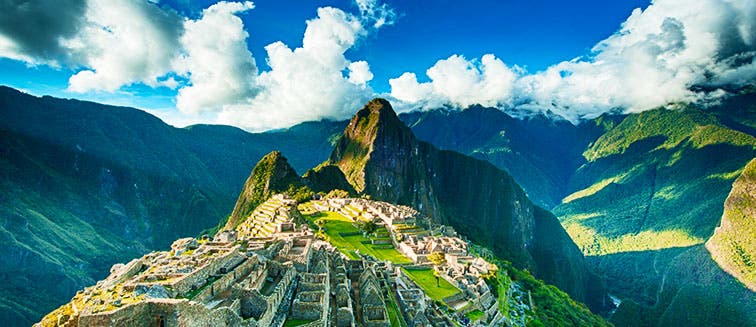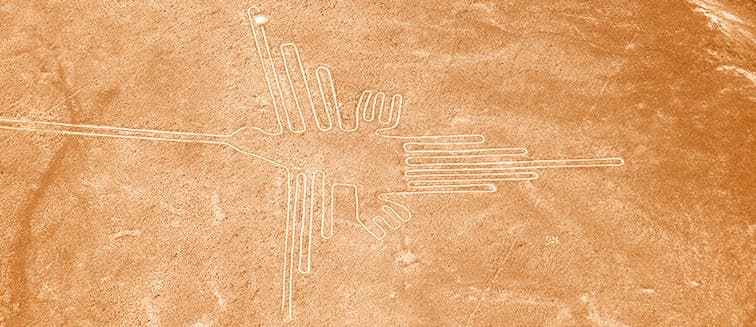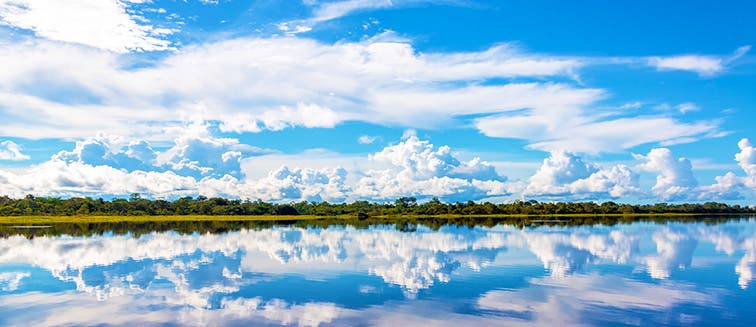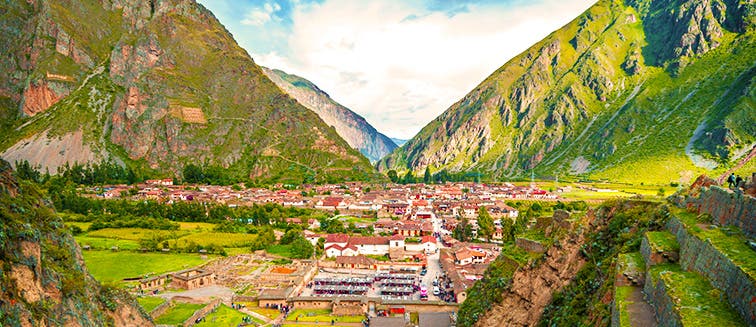Africa
Americas
Asia
Europe
Oceania
By Season
By Interest
By Group
What to see in Peru
Colca Canyon
Tourist attractions Colca Canyon
Colca Canyon in Peru is one of the essential sights if you're going to visit the country. The canyon is about 3,400 metres deep and is one of the largest canyons in the world and the third most visited in Peru.
But the valley contains much more than just the canyon. No wonder, since it's located in the middle of the Andes and surrounded by volcanoes. In fact, some of them are still active. Here are some activities we can recommend. Bear in mind that it's a safe place and while it attracts many travellers, if you leave the most popular parts you can enjoy it in solitude.
Salinas and Agua Blanca Reserve
To visit the Colca Canyon you must pass through the Salinas Reserve, where you can see alpacas, llamas and vicuñas in the wild. Quite a spectacle, before you even reach your destination. The road that crosses it, with its immense landscapes devoid of people, is an attraction in itself.
Remember that, during the whole visit to the Colca Canyon you will be over 3,000 metres above sea level, and in some cases more than 4,000 metres. Take the necessary precautions against altitude sickness.
Look-out point of the Andes or Look-out point of the Patapampa Volcanoes
The mummy Juanita was found in one of the many volcanoes that can be seen from this look-out point, named Pichu Pichu. The views are spectacular, but don't use all your memory cards here, because you have a lot to see. For example, the terrace of totems, which are actually small piles of rounded pebbles with religious significance for the Incas. You can leave your own stone if you wish.
A little reminder: the look-out point is 5,000 metres above sea level, which means that, even if the sun's shining, it'll be cold. Go prepared.
The town of Chivay
To visit the Colca Canyon you must stop in Chivay, the most important town in the area and the last "civilised" settlement you will find. Use the cash points if you need to and buy some bottled water just in case.
Despite its location, Chivay has unusual attractions, such as a planetarium, the main square and some hot springs.
The lagoon of three colours
This lake gets its name from the effect that light has on its surface. The colour that you see depends on the time of day you visit. Atmospheric factors, such as temperature and the wind, also influence its hue.
La Calera hot springs
Remember that the Colca Canyon is a volcanic area. That's why there are many hot springs. The most visited ones are those of La Calera, about three kilometres from Chivay, so you can get there on foot. What you'll find are natural pools at different temperatures. A unique accompaniment to your visit are the incredible views of the valley.
Uyo Uyo, a pause for archaeology
Near the town of Yanque, where there is a display of traditional dances every morning, is the Uyo Uyo archaeological site. If you like hiking, you'll get there without any problem, even though the walk is uphill. The view of the canyon from above is fantastic.
At the site you'll see the layout of the ancient streets of a city that fell into the hands of the Incas and, if you go a little further, there is a beautiful waterfall.
The village of Maca
This is a village of fewer than 2,000 inhabitants notable for the church of Santa Ana, whose interior of mirrors and gold is especially picturesque. In addition, there's a small market held every day where you can taste the inner part of the cactus.
The geyser at Pinchollo
Pinchollo is one of the least visited villages in the Colca Canyon, but it's one you will not want to miss. There's an active geyser nearby and you can take a closer look at the Hualca Hualca volcano.
Visit Colca Canyon to see the flight of the condor
The Cruz del Condor look-out point is the jewel in the crown of the Colca Canyon. Not only because the views of the valley are spectacular, but because it's common to see the flight of condors from here. The Andean Condor, which has inspired songs such as El Condor Pasa, is the largest flying animal in the world. It can reach a weight of 15 kilos and a wingspan of up to 230 cm.
It is best to arrive early in the morning to avoid hordes of tourists. And remember that although condors often make an appearance, they're wild animals, so their presence is not guaranteed.
OUR BEST TRIPS TO COLCA CANYON
YOU ALSO LIKE
Tourist attractions peru
Points of interests
- Trips to Aguas Calientes
- Trips to Arequipa
- Trips to Colca Canyon
- Trips to Cusco
- Trips to Huacachina Oasis
- Trips to Iquitos
- Trips to Islas Ballestas
- Trips to Lake Titicaca
- Trips to Lima
- Trips to Machu Picchu
- Trips to Nazca
- Trips to Paracas
- Trips to Puerto Maldonado
- Trips to Sacred Valley
Other Points of interests
- Trips to Amazon
- Trips to Argentinian Patagonia
- Trips to Atacama Desert
- Trips to Banos
- Trips to Baquerizo Moreno
- Trips to Bariloche
- Trips to Barrio La Boca
- Trips to Bogota
- Trips to Buenos Aires
- Trips to Buzios
- Trips to Cartagena de Indias
- Trips to Chilean Patagonia
- Trips to Christ the Redeemer
- Trips to Coffee Axis
- Trips to Comuna 13
- Trips to Copacabana Beach
- Trips to Cotopaxi National Park
- Trips to Cuenca
- Trips to Easter Island
- Trips to Eduardo Avaroa
- Trips to El Calafate
- Trips to Galapagos Islands
- Trips to Getsemani
- Trips to Guayaquil
- Trips to Iguazu Falls
- Trips to Iguazu Falls
- Trips to Ilha Grande
- Trips to Isabela Island
- Trips to Islas del Rosario
- Trips to La Candelaria
- Trips to La Loberia Beach
- Trips to La Paz
- Trips to Lake Titicaca
- Trips to Luna Valley
- Trips to Manaus
- Trips to Medellín
- Trips to Mendoza
- Trips to Middle of the World Monument
- Trips to Mindo
- Trips to Otavalo
- Trips to Paraty
- Trips to Perito Moreno
- Trips to Potosi & Cerro Rico
- Trips to Praia do Forte
- Trips to Puerto Natales
- Trips to Quilotoa
- Trips to Quito
- Trips to Rapa Nui National Park
- Trips to Reserva Nacional Los Flamencos
- Trips to Rio de Janeiro
- Trips to Riobamba
- Trips to Ruins of Ingapirca
- Trips to Salar de Uyuni
- Trips to Salvador
- Trips to San Andrés
- Trips to San Cristobal Island
- Trips to San Felipe de Barajas Castle
- Trips to San Pedro de Atacama
- Trips to San Rafael Glacier
- Trips to San Telmo
- Trips to Santa Cruz Island
- Trips to Santa Lucía Hill
- Trips to Santa Marta
- Trips to Santiago de Chile
- Trips to São Paulo
- Trips to Serrano & Balmaceda Glaciers
- Trips to Sucre
- Trips to Tayrona
- Trips to The Devil's Nose
- Trips to Tiahuanaco Ruins
- Trips to Torres del Paine National Park
- Trips to Ushuaia
- Trips to Valley of the Moon
- Trips to Valparaiso
- Trips to Vicente Perez Rosales National Park
- Trips to Viña del Mar
Countries Nearby
- Argentina Trips
- Bahamas Trips
- Belize Trips
- Bolivia Trips
- Brazil Trips
- Canada Trips
- Chile Trips
- Colombia Trips
- Costa Rica Trips
- Dominican Republic Trips
- Ecuador Trips
- El Salvador Trips
- Guatemala Trips
- Honduras Trips
- Mexico Trips
- Panama Trips
- Peru Trips
- United States Trips
Trip Styles
Subscribe to our newsletter and join Exoticca GO
The best travel deals
Exclusive promotions
Expert travel tips
